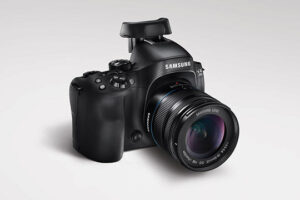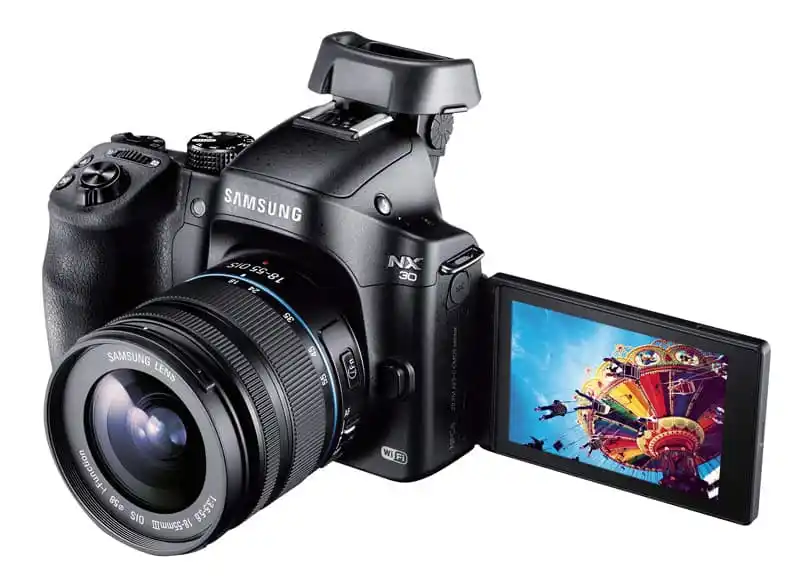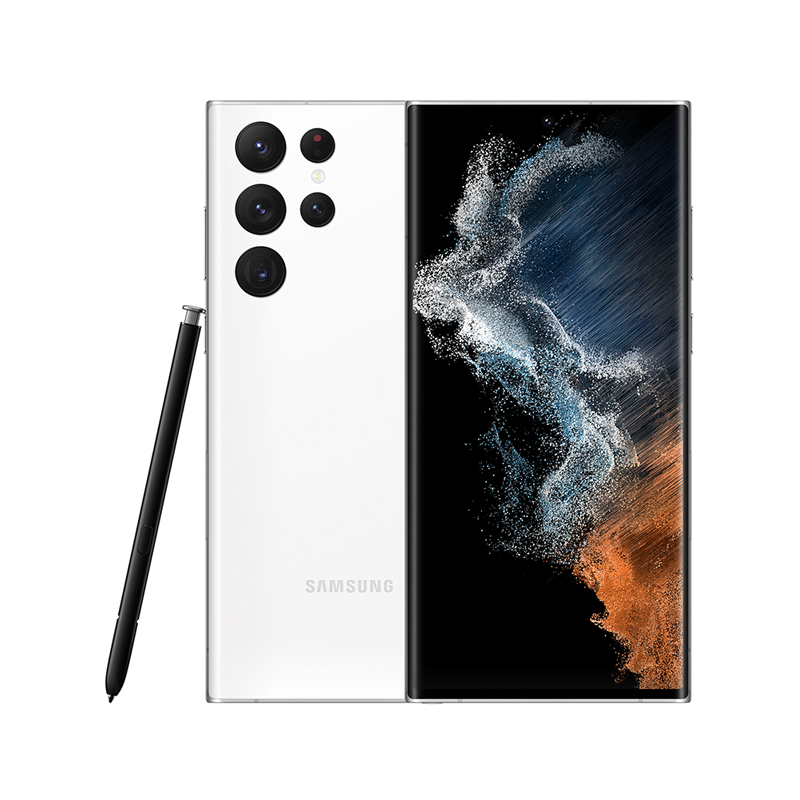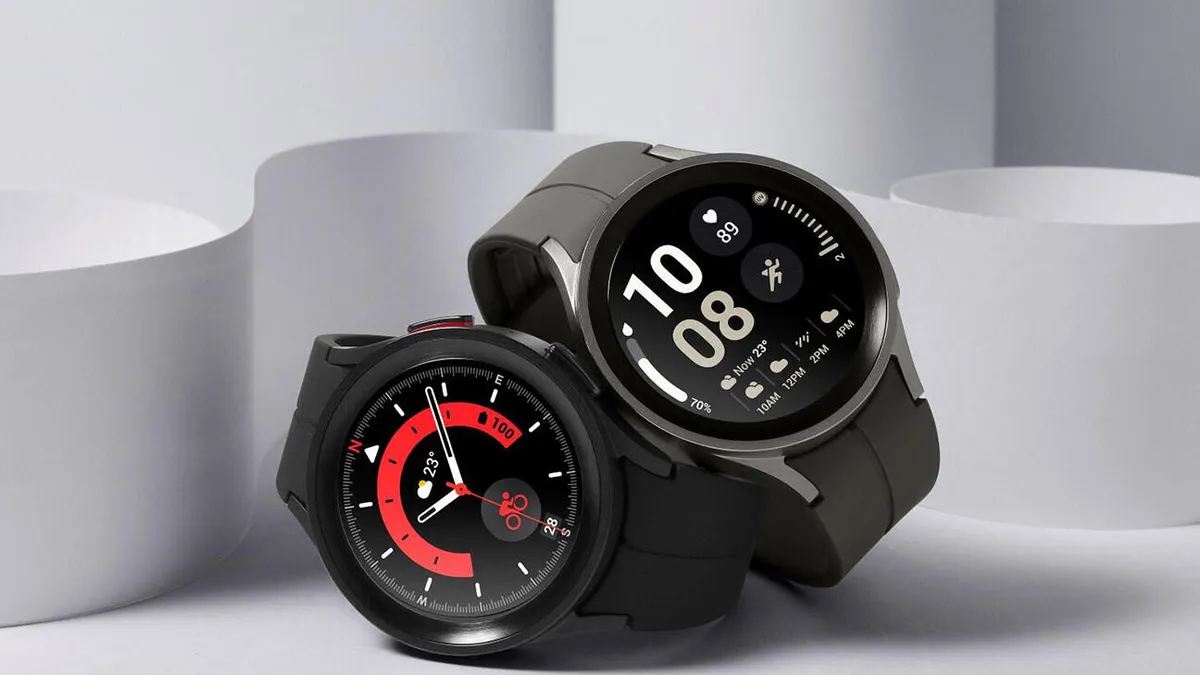The Samsung NX30 is a new, generally styled APS-C reduced framework camera. The DSLR-like NX30 highlights a 20.3 megapixel APS-C CMOS sensor.
Presentation:

Tilt able electronic viewfinder (XGA, 2,359K-dab goal), 3-inch turning Super AMOLED touchscreen, ISO scope of 100-25600, Mixture Auto Concentration (AF) framework with both stage and differentiation discovery, worked in spring up streak, full 1080p HD film recording with sound system sound, 9fps nonstop shooting, top shade speed of 1/8000th second, NFC and Wi-Fi abilities, and backing for Samsung’s extraordinary I-Capability focal points. Accessible in dark, the Samsung NX30 retails for £899.99/$999.99 with the 18-55mm OIS III unit focal point.
Usability:
The Samsung NX30 feels like more of a mass-market gadget than its top notch sticker price could propose, with an all-plastic body that weighs simply 375g. In the event that you’re expecting a metal undercarriage with machined controls, the NX30 isn’t the most ideal camera for you. It is not necessarily the case that the NX30 isn’t very much fabricated however, and you’ll unquestionably see the value in the NX30’s absence of mass during a drawn out day’s shooting.
At 127 x 95.5 x 41.7mm, the NX30 isn’t that a lot greater than a few Miniature Four Thirds cameras, noteworthy given the truly bigger APS-C sensor inside.
The focal points are as yet the primary region where the NX30 experiences in comparison to the Miniature Four Thirds cameras, particularly in the event that you’re searching for the littlest in general bundle. The NX30 is somewhat small when twinned with the 30mm hotcake focal point, yet the 18-55mm and particularly the 50-200mm focal point are a considerable amount greater and heavier than their MFT’s counterparts.
This is totally reasonable given the bigger sensor that lies at the core of the NX30, and is the compromise for the picture quality benefits that an APS-C sensor offers. No one but you can choose if size and convenientce or picture quality means a lot to you.
The provided 18-55mm unit focal point includes Samsung’s presently standard I-Capability button, a harmless looking button on the focal point barrel which when squeezed enacts a sub-menu of key choices and permits you to transform them basically by turning the center ring.
Sequential presses of the I-Capability button travels through the five accessible settings – shade speed or potentially gap, ISO speed, openness pay and white equilibrium. The last two settings can alternatively be turned on or off in the principal menu, permitting a level of client customisation. The I-Capability button gives a speedy approach to getting to specific key settings, and is appropriate to the NX30 with its electronic viewfinder where you can hold it up to your eye, press the button and turn the center ring with your left hand, and grasp the camera with your right.
Holding the NX30 at a safe distance to see the settings while squeezing the I-Capability button and turning the center ring is more unwieldy, particularly when you can also utilize the back control wheel to play out similar activities, something that we ended up doing as a matter of course.
The new I-Capability In addition to mode empowers you to utilize the iFn button in mix with the metering, openness pay and AEL buttons to coordinate considerably more choices.
Of course the three customisable buttons are set to Dynamic Reach, Concentration in Center and DIS (Antishake), yet they can each be reconfigured to one of 13 settings. Holding down the iFn button while squeezing the metering, openness remuneration or AEL button is a little abnormal by and by, however it adds to the configurability of the NX30.
The NX30, similar to a few of its opponents, presently includes a Half breed Auto Concentration (AF) framework, like the one in the NX300 camera.
This joins stage and differentiation recognition self-adjust strategies to convey an auto-center framework that is snappier and more precise than the ordinary difference discovery framework utilized by the past NX20, especially in low-light, on account of the 105 stage location and 247 differentiation AF focuses. The NX30 isn’t exactly just about as speedy as the class driving Olympus OM-D E-M1 and the Fujifilm X-T1, yet we question that most clients would see the distinction in all actuality.
There were not very many events when the NX30 neglected to lock onto the subject, particularly while utilizing the middle AF point, which can be conveniently set to one of four distinct sizes.
Optical picture adjustment is provided by means of the focal points, as opposed to being inherent to the NX30’s body. It very well may be turned here and there through the OIS menu choice, instead of by means of a more convenient switch on the focal point barrel, with two distinct modes accessible.
When empowered, the NX30 naturally makes up for camera shake, which is a slight obscuring of the picture that ordinarily happens at slow shade speeds when the camera is hand held. By and by we found that it has a recognizable effect. You don’t see that the NX30 is really doing anything different when against shake is turned on, only that you can utilize more slow shade speeds than ordinary yet take sharp photographs. Fortunately leaving the counter shake framework on all the time didn’t influence the battery-duration too gravely, accomplishing around 350 shots prior to waiting be re-energized.
One region where the NX30 sparkles is styling and design. It has a spotless and modern DSLR-like plan instead of the retro look of the Olympus’ PEN series. The Fujifilm X reach, while being more bended and “natural” than. The Panasonic G-series or Sony NEX models. Maybe more significantly it also offers a sensible and instinctive point of interaction. Finding some kind of harmony between giving simple admittance to the fundamental elements. Accomplishing a cleaned up control framework. While as yet figuring out how to cook for the two novices and more skillful prosumers the same.
On the façade of the Samsung NX30 is a little center help and self-clock pointer light. Focal point discharge button, a metal focal point mount. The rubberized hand-grasp, and a convenient Profundity of Field Review button. Samsung have upgraded the camera’s grasp, which in comparison to. The past NX20 is substantially more articulated and taller. There’s a liberal, finished dark plastic hand-hold on the left-front of. The camera with a score for your pointer, and a huge thumb-grasp on the back completed in a similar rubberized, false calfskin material.
Enormous metal neck lash eyelets are situated on top of the NX30 along the edges. With the back overwhelmed by the turning 3 inch AMOLED screen. On the right half of the body, saw from the back, is a plastic cover that houses two distinct ports – a common USB/AV Out port. A scaled down HDMI for interfacing the NX30 to a HD TV or screen.
Situated on the lower part of the camera is the battery compartment safeguarded by a plastic lockable cover. The BP1410 battery gives up to 360 shots under the CIPA testing standard. On a standard with the vast majority of the NX30’s primary opponents. With regards to putting away your photos the NX30 utilizes SD/SDHC/SDXC cards. With the memory card space sharing the battery compartment like most cameras do. Also found on the lower part of the camera is a metal stand mount .Which is excellent situated in-accordance with the focal point of the focal point mount.
The NX30 highlights an underlying electronic viewfinder. The simple notice of an EVF is generally sufficient to evoke clearly moans from any serious photographic artist. As they have customarily been ineffectively carried out previously, with low-res, grainy presentations. That were just truly appropriate for still subjects. Fortunately the electronic viewfinder on the NX30 is obviously superior to more seasoned ages of EVFs.
It has a noteworthy 0.96x amplification, offers 100 percent field of view. The goal is a great 2,359K dabs, bringing about an enormous, point by point and splendid presentation that ought to convince most non-devotees to utilize it.
Strangely the viewfinder can be truly shifted through 90-degrees, going about as a regular locater or a midriff level locater. To work it, you hold the viewfinder on the two sides and pull it in reverse. Then pivot it upwards to 0 degrees, with two further snap in the middle between.
Likewise with the remainder of the NX30. The tilt able viewfinder feels somewhat plasticky, and utilizing it unavoidably makes. The camera more massive, however it’s most certainly more than a contrivance, demonstrating valuable for more genuine shots or while mounting the camera on a low stand.
There’s also a helpful eye sensor close by the EVF .Which switches flawlessly between the LCD screen and the EVF when you hold it up to your eye, saving battery power and eliminating. The undesirable interruption of the LCD show. As the EVF is perusing a similar sign from the picture sensor as the back LCD screen. It can also show comparative data – for instance, you can see and work the Capability Menu and see every one of the ongoing settings. Giving speedy admittance to all the key camera settings while it’s held up to your eye.
The NX30’s 3-inch, 1037k-speck back LCD touchscreen is exceptionally noteworthy, consolidating AMOLED (Dynamic Network Natural Light Transmitting Diode) innovation that gives various key benefits over customary LCD screens. These remember simpler review for brilliant daylight and an extremely wide survey point, multiple times quicker invigorate rate than regular LCDs, less power utilization and a high differentiation proportion of 10,000:1.
The turning LCD screen can be moved 180 degrees evenly and 270 degrees in an upward direction and is an exceptionally welcome expansion, especially while shooting video or stills from more strange points, or might we venture to say it, for that exceedingly significant selfie.
The NX30’s touchscreen can be utilized for a large number of things, including getting to the Primary menu and Capability menu choices, setting the AF point, and in any event, terminating the shade.
The Touch AF mode offers an extremely smart component that we haven’t seen before on some other camera. You contact the subject to establish the mark of concentration, and can then drag a second box across the screen to where you need to meter the openness from – exceptionally sharp. At long last, you can haul down from the highest point of the screen to see a synopsis of the camera’s primary settings (screen splendor, capacity, battery level and as of late changed camera settings).
Related to the iFn focal point and actual controls, the Samsung NX30 is quite possibly of the most versatile camera around with regards to its UI.
The NX30 has an implicit residue evacuation framework that vibrates the sensor 60,000 times each second to eliminate any undesirable bits from showing up in your pictures. As a matter of course this component is switched off, something of an oversight by Samsung, so try to empower it with the goal that it works each time you fire up the camera (it just requires around one second). You can also play out a manual sensor clean anytime. The NX30 has an inherent spring up streak which is initiated by a switch on the highest point of the camera. This valuable spring up unit offers a scope of blaze synchronization modes, guide number of 11 at ISO 100, a X-sync speed of 1/200 second, and inclusion for a 28mm wide focal point. The NX30 also offers a blaze hot shoe that will acknowledge viable Samsung flashguns.
Also found on top of the NX30 are the sound system microphones either side of the glimmer, little metering and Direct Connection buttons, on/off switch circling the little however material shade button. Another expansion to the NX30 is a helpful manual dial for exchanging between the single edge, nonstop shooting, self-clock and organizing choices.
Finishing the highest point of the NX30 is a conventional round shooting mode dial with a positive snap for the different openness modes, which is a commonplace component of DSLR cameras and empowers you to change between the different choices rapidly. The typical choice of Program, Gap Need, Shade Need, and Manual are accessible for the more experienced photographic artists, and more amateur cordial Scene modes and Shrewd Auto mode are also gotten to through this dial.
Brilliant Auto is Samsung’s likeness the wise auto modes on contenders models. You essentially point the NX30 at a scene or subject and the camera ideally remembers it from 16 normally utilized presets and consequently changes its settings to convey ideal outcomes. This implies that it’s excessive for the client to physically dig into scene modes to hit up any semblance of ‘scene’ or ‘bloom’, making the NX30’s activity simply an instance of simple to use.
By and by the Brilliant Auto framework functions admirably. With the NX30 ordinarily picking the most fitting blend of settings for the ongoing circumstance. However it takes care of business for most of the time. It makes it feasible for the less experienced photographic artist to handily take all around uncovered, sharp pictures of individuals. Landscape and close-ups by essentially picking up and firing away the camera and is more instinctive than the customary scene modes (which are as yet accessible).
At the point when the I-Scene shooting mode is chosen, the NX100 consequently perceives. What kind of focal point has been connected and proposes a rundown of scene modes to browse that are fitted to that particular focal point. While this assists with reducing the typical huge number of decisions, it would have been more viable whenever joined with the Shrewd Auto shooting mode, as opposed to being an independent mode, as you actually need to pick from the scene modes that are introduced to you.
The Samsung NX30 offers worked in Wi-Fi, with a variety of choices accessible. Clients can email their pictures, transfer them straightforwardly to Facebook, Picasa, Photobucket and YouTube, or immediately duplicate them to a home PC by means of Auto Reinforcement. Samsung’s AllShare Play and Microsoft’s SkyDrive cloud administrations give free extra room that is open by anybody with a record.
MobileLink permits you to straightforwardly send pictures to a viable cell phone or tablet. While Far off Viewfinder uutilises a cell phone as a live picture previewer. At last television Connection replaces an actual HDMI association by playing back photographs on any gadget.
Which permits you to interface it to a viable web empowered gadget or another NFC-empowered camera by essentially tapping them together.
In addition to other things, changing the opening. Screen speed by abandoning left to right and back once more (it also bends over as zoom in/out during picture playback). So you’ll be comfortable on the off chance that you’ve utilized a DSLR previously – minimized camera clients should become familiar with utilizing this dial.
In Manual mode you utilize the control ring that circles the back route cushion to change the gap. In the event that you like to utilize this ring as opposed to the top dial, it also changes. The shade speed and gap too in those need modes.
The NX30 can record full HD 1080p 1920×1080 and 720p 1280×720 films. In the 16:9 angle proportion and standard VGA 640×480 or 320×260 motion pictures. In the 4:3 viewpoint proportion, all utilizing the H.264 design at 30 casings each second.
There’s also an exceptional 1920×810 Cine mode that records at 24fps. The helpful one-contact record button on the back shoulder of the camera. The highest point of the camera, complete with an onscreen Sound Level Meter and flexible information levels. And there’s a standard 3.5mm microphone input for greater sound catch on the left-hand side of the camera.
The HDMI port permits you to interface the NX30 to a high-def Television. And for more high level clients the camera offers HDMI live spilling with. Full HD 30p result to a bigger screen, recorder, and other HDMI gadgets.
The NX30’s film mode offers full command over ISO speed, metering. White equilibrium, clock settings and openness during video recording through. The Program, Gap Need, Screen Need and Manual shooting modes. Three auto-center modes are accessible – single, persistent. Manual – and there are three manual center help choices to assist you with accomplishing precise centering. At long last, the optical picture stabilizer also works for video recording as well as stills.
Going to the back of the NX30, to one side of the enormous LCD screen. That we’ve proactively referenced is a comfortable round route cushion with four buttons above. The openness remuneration and locking the openness, then the Menu button.
The principal menu framework on the NX30 is exceptionally straight-forward to use. With five fundamental menus introduced as a column of even symbols, similar as Group’s DSLR camera range. The Fn button gives fast and simple admittance to 14 of the main camera settings.
Utilized in blend with the four headings on the route cushion. That set the Presentation Mode, AF Mode, ISO and White Equilibrium choices. You truly can get to a large portion of the NX30’s vital choices with one press of a button. Albeit transforming them takes a couple more presses. Finishing the back controls are buttons for playing back and erasing your pictures. With the last option also getting to the Custom mode during shooting.
There are four AF Region modes on offer. Incorporating Determination AF with a selectable center region, Multi AF, Face Discovery. Self-Representation Following. With Single, Nonstop and Manual AF Modes accessible. The NX30 also has a helpful AF Need capability that starts centering. When you point the camera.
Whenever you have chosen manual spotlight mode on the focal point barrel. Turning the manual center ring naturally expands the amplification on the LCD show. Which is a major assist in getting the emphasis with spotting on. This is genuine, non-introduced amplification, exceptionally helpful for precise manual centering – gave you figure out how to consistent the camera.
The screen keenly gets back to ordinary amplification. When you quit utilizing the manual center ring for a couple of moments. Metering choices incorporate Multi, Center-weighted and Spot. While the ISO range runs from 100-25600.
The Samsung NX30 has an extraordinary Burst mode. Which empowers you to require 9 edges each second for 45 JPEG pictures. The most elevated picture quality, or 9 Crude pictures, again a major enhancement for the NX20. The intriguing Burst mode takes shots at 10, 15 or 30fps. For 30 shots with a solitary press of the shade button. Yet just for little JPEGs.
Whenever you have caught a photograph. The Samsung NX30 has a genuinely decent scope of choices with regards to playing. Checking on and dealing with your pictures. You can in a flash look at the pictures that you have taken. View thumbnails (up to 40 onscreen simultaneously), zoom in and out up to 7.6x amplification. View slideshows, erase, share and safeguard a picture and set the print request.
There are various ways of modifying the appearance of a generally caught photograph. Including brilliant channels, redeye fix. Backdrop illumination, changing the photograph style, resizing, pivoting, face correct, splendor, contrast and vegetating. The Presentation button flips definite settings data about each image on and off, for example. The ISO rating and gap/shade speed, there are little splendor and RGB histograms accessible. The Feature choice makes any smothered features regions streak on the LCD screen.
Picture Quality:
The example pictures in this survey were all taken utilizing the 20.3 megapixel SuperFine JPEG setting. Which gives a typical picture size of around 8Mb.
The Samsung NX30 created pictures of fantastic quality during the audit time frame. The 20.3 megapixel APS-C CMOS megapixel sensor utilized. In the NX30 produces commotion free JPEG pictures at ISO 100-800, with ISO 1600 also looking awesome.
ISO 3200 just shows a little commotion. While the quickest settings of ISO 6400-25600 are a considerable amount noisier and experience. The ill effects of mellowing of fine detail and a deficiency of immersion. The NX30 applies a considerable amount of sound decrease to the JPEGs, as shown. By the Crude documents which have more commotion at the similar ISO settings.
The pictures were a little delicate straight out of the NX30 at. The default honing setting and in a perfect world require some further honing in an application like Adobe Photoshop. Or you can change the in-camera setting for JPEG records. The night photo was astounding, with the greatest shade speed. Of 30 seconds and bulb mode of 4 minutes permitting you to catch a lot of light.
Document Quality:
The Samsung NX30 has 3 distinct JPEG picture quality settings accessible. With Super Fine being the greatest choice, and you can also shoot in the Crude arrangement. Here are a few 100 percent crops which show the nature of the different choices. With the document size displayed in sections.
Honing:
The right-hand picture has made them hone applied in Photoshop. The out-of-the camera pictures are somewhat delicate at the default honing setting. Advantage from some further honing in a program like Adobe Photoshop. You can also change the in-camera honing level. Education, first Shade, second Drape, and Off.
Night:
The Samsung NX30’s most extreme shade speed is 30 seconds. There’s also a Bulb setting of as long as 4 minutes. Which is extraordinary information in the event that you’re truly keen on night photography. The camera takes a similar measure of time again to apply sound decrease. So for instance at the 30 second setting the genuine openness requires 60 seconds.
Savvy Channels:
The Samsung NX30 offers 13 imaginative channel impacts.
Dynamic Reach:
The Savvy Range+ highlight discernibly expands the noticeable detail in both shadow and feature regions. In spite of the fact that it will in general waste of time the more grounded colors all the while. The new HDR choice effectively joins three shots taken. At various openings into a solitary photograph with significantly extended unique reach.
Display:
The Display mode permits you to take vertical or level scene photographs essentially by squeezing. The shade discharge button once and afterward moving the camera toward the on-screen guides.



